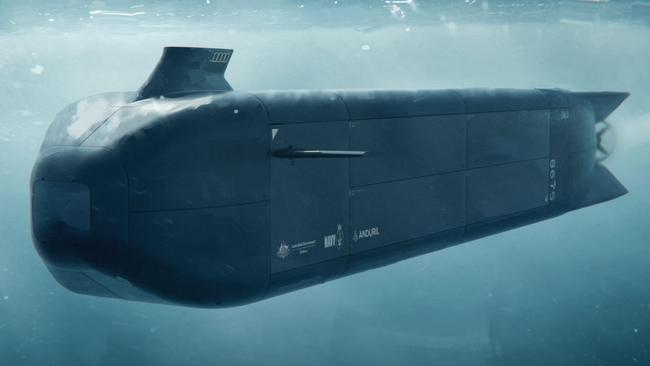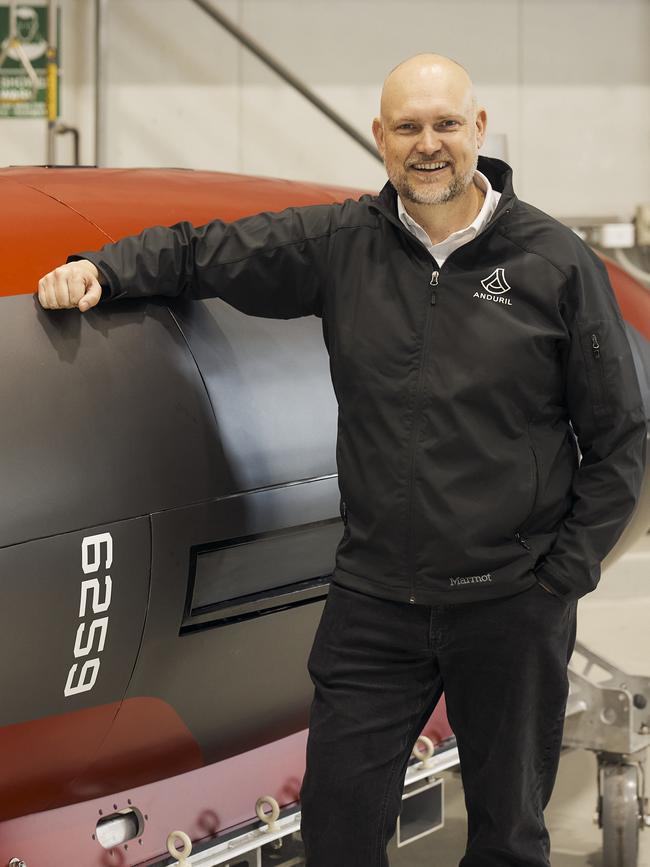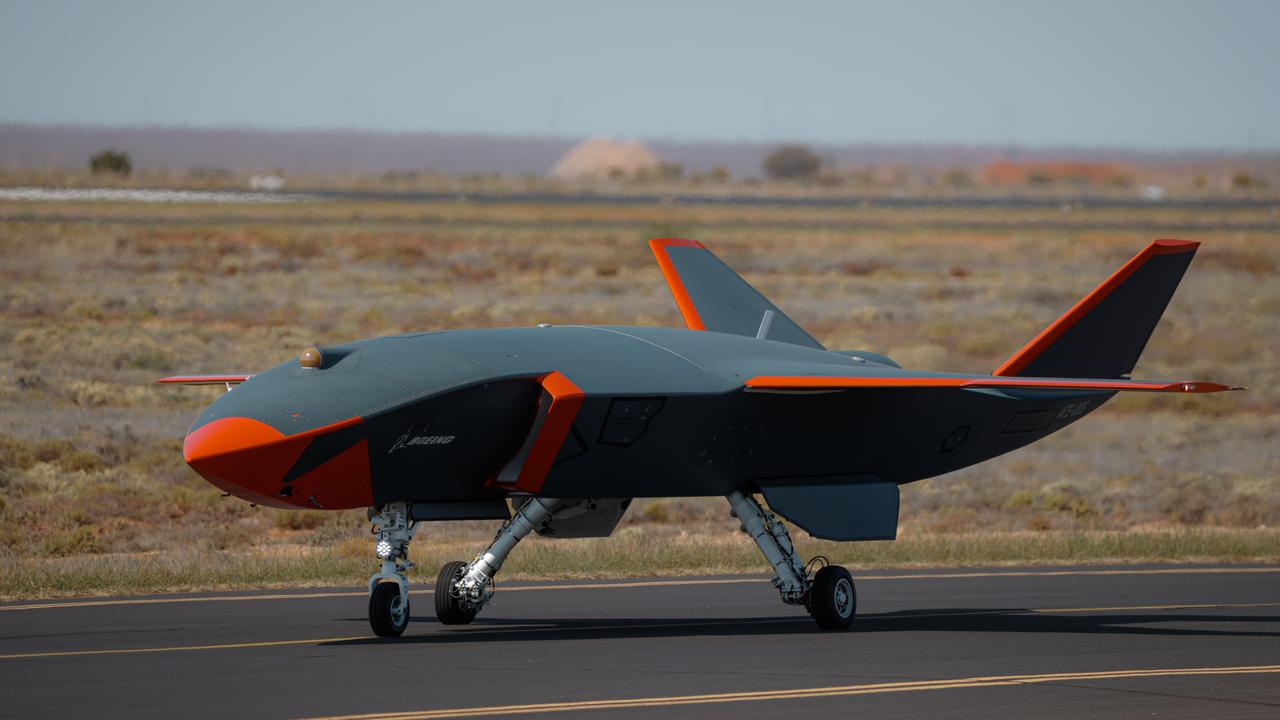Software key to Anduril advances
Anduril is one of the new generation of US companies that aims to deliver defence products en masse, quickly, and then update them even faster.

“Fundamentally, I’m a software guy,” says Shane Arnott.
And that’s defined his roles at a succession of US-owned companies, culminating as senior vice-president for programs and engineering at California-based Anduril Industries. On his journey, he achieved a lifetime dream, to build an aeroplane of his own design (and Australia’s first indigenous aircraft design for 60 years), the autonomous Boeing MQ-28A Ghost Bat.
Anduril is one of the new generation of US companies that aims to deliver defence products en masse, quickly, and then update them even faster. What the company’s products almost all have in common is software, mostly Anduril’s Lattice OS, which uses a common core in different variants to deliver command and control and autonomy and has elements that are re-used over and over again.
“If you’re going to make rapid changes, you’re going to do it in the software,” the 50-year-old emphasises. This means making hardware a relatively less important part of the war-fighter’s solution.
That’s a revolutionary position: the West has traditionally built exquisitely complex, highly integrated hardware and software platforms such as the RAAF’s F-35A Lightning II or the RAN’s Collins-class submarines. These take years to be designed, built and tested and then upgraded.

One thing that struck Arnott repeatedly was the disparity between modern technology – autonomy, for example – and the more ponderous business models of many of the big companies offering that technology: 21st-century technology, but business models that often belong in the late-20th century and sometimes even hark back to World War II.
He also runs Anduril’s maritime business and uses the joint ASCA/RAN/Anduril Ghost Shark program to illustrate the company’s approach. Anduril Australia was contracted by the RAN in 2022 to build three prototype Ghost Shark Extra Large Autonomous Undersea Vehicles, or XL-AUVs, within three years.
The company delivered the first last year, will deliver the remaining two this year and built a fourth for testing in the US using its own money. Anduril is now building a factory in Australia to mass-produce the Ghost Shark, which has a supply chain of 42 Australian companies.
Ghost Shark is fully electric, says Arnott: “We got the speed exactly right, and we got the range exactly right – but the range will be very different tomorrow. Why? Because it’s using battery technology.”
Battery technology will improve every year thanks to the massive investments by the eVTOL (electric vertical take-off and landing aircraft) and EV communities, so Anduril won’t develop batteries in-house but will use a vendor’s technology instead. That’s the benefit of a commercial supply chain, Arnott says.
A lesson from Ukraine is that equipment can be 80 per cent right and 20 per cent wrong. And you need to upgrade it quickly because the enemy may have figured out what you’re doing and has already pivoted to out-smart you.
“Whatever we do, we know it’s going to be wrong – but it’s going to be right enough that we’ve then got the ability to pivot,” Arnott says.
But this requires real agility – that means updating software quickly, and building hardware that’s easy to change and improve.
The company’s Barracuda family of cruise missiles is an example, he adds. Barracuda is designed for rapid, large-scale production, so forgoes exquisite composite manufacturing processes used in traditional cruise missiles.
The Barracuda’s composite fuselage is hot pressed using the same process used to manufacture fibreglass bath tubs. The result is durable enough but less expensive, more producible, and has a broader and more resilient supply chain.
If you can make bath tubs, you can be part of a missile supply chain.
Anduril also manufactures the Fury Uncrewed Aerial Vehicle (UAV) for the US Air Force that flies at about 600 knots; its Ghost Shark moves at 100th of that speed in water. But they both have the same guidance, navigation and control software: Anduril’s Lattice OS.
“They’re both robots. They both fly,” Arnott says. “From a software standpoint, it’s the same, right? If I taught you how to use a Ghost Shark, you could use a Fury UAV.”
And that’s Anduril’s “secret sauce”: “Because when you’re a software person it’s all about reuse,” Arnott says. You can also reuse some hardware the same way, he adds.
Next year Anduril will start construction of a 465,000sqm manufacturing plant in Columbus, Ohio dubbed Arsenal-1, to put its business model into practice. The factory will use another software product, Arsenal OS, to integrate the design, development and mass production for all Anduril’s product range.
That’s a new challenge for Arnott, who began life in Wangaratta and studied computer systems engineering at Melbourne University. He took a job straight out of university working on complex simulations with a CSIRO spin-off, The Preston Group. The company’s first customer, he says, was US parcel delivery company FedEx, which was struggling to streamline its parcel and aircraft movements.
He moved to Boeing Australia and rose to become the youngest of Boeing’s 40 senior technical fellows, and the only non-American to achieve that engineering distinction. His next move was to the company’s Phantom Works development organisation. Then he helped start Boeing’s Phantom Works International organisation, which is where the MQ-28A Ghost Bat program came from.
Anduril, which he joined four years ago, has elevated him again but paradoxically brought him closer to his roots. “In Boeing, I was an engineer. I was pushed into management because that’s what you needed to do to grow.”
Tinkering with highly technical things was an occasional perk of the management job, whereas within Anduril he is expected to do that all the time: “If you’re a senior leader in this company and you don’t understand the [technical] detail, you’re not going to make it, which is super exciting.”


